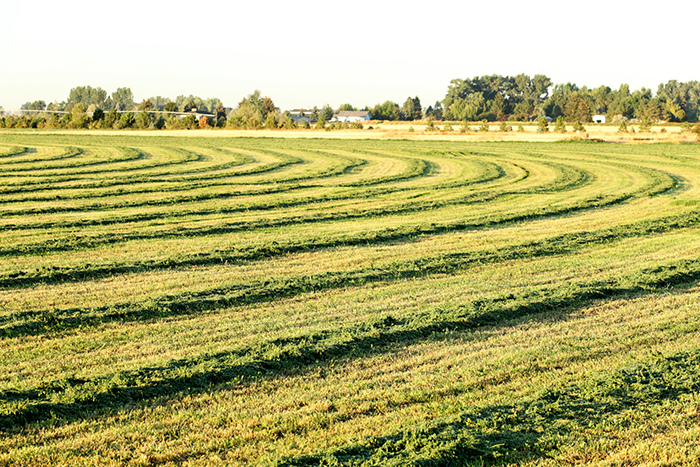
The best way to put a big plan in action is to start small. Starting small ensures each step is a sure-footed stride in the direction of your goals, rather than a random stab at the unknown. And when life takes an inevitable turn and the path forward is not linear, there will be a series of small wins to build on and you will bounce back much faster.
If you’re new here, welcome. This special issue of Hay & Forage Grower XL is exclusively sent to farmers with 500 or more forage acres on their harvest agenda. It has been specifically curated to address topics that may be more pertinent to relatively large-scale operations — or in this case, extra-large scale operations.
There’s something for everyone on the mailing list throughout the following pages, whether you bale small squares of alfalfa for the horse market, raise dairy cattle and chop a large acreage of homegrown forage, or run a large-scale custom forage harvest business. But before we dive into what makes these types of operations stand tall, I’d like to take a moment to appreciate that most large-scale farms are good at being big because they were first successful at being small.
Every operation — no matter the size — got its start as a first-generation farm. In my experience, conversations with multi-generational farmers usually begin with a backpedaling of the farm’s history, tracing their bloodline all the way to the great-great-grandparent who put down roots on the original homestead. Conversely, some farmers I’ve met are the first generation themselves, taking a leap of faith over the often steep barriers to entry that increasingly define the farming industry.
Regardless of their origin story, the first crop or livestock product that was produced is sometimes still the bread and butter of the operation today. Other times, farms expand, diversify, modernize, or change their production systems altogether. Relocating to a different region to align with market demand and processing trends isn’t out of the question, either.
The initial ideas for these expansions, diversifications, modernizations, and pivotal changes usually start small — like the humble beginnings of a forage seed. Metaphorically speaking, these ideas need to be handled with different equipment, planted at different depths, seeded at different rates, and allowed different germination periods before they can be expected to flourish. The implementation of ideas varies just like recommendations for new forage seedings, and both depend on the goals farmers have for their business.
In addition to starting small, farmers know that big-time business is often the result of a series of little things done well. It’s the consistent product and genuine service that turn first-time hay buyers into repeat customers. It’s the stringent filling and packing protocol after every cutting that ensures high-quality forage is a regular menu item for your animals. And it’s the small gestures toward employees and big appreciation for farm crews that keep large-scale operations running like well-oiled machines.
The weather is no small matter, and it’s often the biggest thorn in a farmer’s side when it comes to putting up a quality crop. Whether that crop is a dry bale of hay or a pile of chopped haylage, timing is everything to hit moisture targets and nail storage procedures. High-quality forage doesn’t cost any more to make than poor-quality forage, but it sure takes more organization, forward-thinking, and weather forecasting on the harvester’s end.
The second greatest challenge farmers typically cite is labor, especially for large operations with many employees to manage. Leading a team of farm workers requires big effort to train them intentionally, encourage their growth, and recognize when tough jobs are handled efficiently. Additional challenges can arise when these employees double as family. But many of the large farms I’ve visited attribute their success to a taskforce of hard-working people who go above and beyond what is expected of them — another hallmark of a lucrative business.
If any or all of these topics resonate with you, then congratulations — you’ve likely mastered the art of farming large. Wear that distinction proudly and continue to serve the agricultural industry big time. But don’t forget where you came from or the significance of starting small. Legacies are built when farmers steward big ideas like tiny seeds, invest ample time into the little things, and create space for their families and employees that open doors to the next opportunity.

